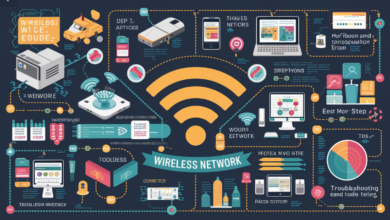What is switching in computer network? Switching is a process used to send data from one device to another in a network. It helps in directing the data to the right place, ensuring that it reaches the correct destination without any confusion. Switching works like a traffic controller for data, guiding it smoothly across different paths in the network.
In computer networks, switching ensures that the information gets to the right device at the right time. This makes it an important part of how the internet and other networks work. Whether it’s connecting computers, phones, or other devices, switching makes communication possible by allowing data to flow easily and securely between them.
What is Switching in Computer Network? Understanding the Basics
What is switching in computer network? Switching is an important process used in computer networks to move data from one device to another. It acts like a helper, ensuring that data travels the correct path. Without switching, the data might get lost or go to the wrong place. This is why switching is very important in modern networks like the internet, where information needs to travel fast and without any problems.
Switching works by using devices called switches. These switches receive data from one device and forward it to another. This happens quickly, ensuring that the information reaches its destination without delay. Think of it like sending a letter: switching makes sure the letter reaches the right address.
How Does Switching in a Computer Network Work? A Simple Explanation

In simple terms, switching in computer networks helps direct the data to the right place. When you send a message or open a website, the data needs to travel across many devices to reach you. A switch ensures that it follows the right route. Switches are like post offices that take the data and send it to the correct address.
Switching uses addresses, called MAC addresses, to know where the data needs to go. The switch checks the address and sends the data to the correct destination. This helps the data travel faster and ensures that it does not get lost along the way.
Types of Switching in Computer Networks: What You Need to Know
In computer networks, there are three main types of switching: circuit switching, packet switching, and message switching. Each type of switching has its own way of handling data. Let’s break them down:
Circuit Switching: This method creates a direct connection between devices for the entire duration of the communication. It is like a private line between two people for a phone call.
Packet Switching: This is the most common method used on the internet. It breaks data into smaller packets and sends each packet separately to its destination. Think of it as sending different pieces of a letter through different routes.
Message Switching: In this type, the entire message is stored and forwarded in one go. It is similar to sending a full letter through a post office, with no breaks in between.
Each type is used based on the need for speed, reliability, and the type of data being sent.
Why is Switching Important in Modern Computer Networks

Switching plays a huge role in making sure modern computer networks work smoothly. Without switching, devices would not be able to communicate with each other. It allows data to move between different devices like computers, phones, and servers in a safe and efficient way.
Switching also helps reduce delays in data transfer. When data travels across a network, switches make sure it reaches its destination quickly. This is why you can watch videos or play online games without waiting too long for data to load.
Conclusion
In conclusion, switching in computer networks is like the traffic system that helps direct data to its correct destination. It ensures that data moves efficiently and quickly across a network. Without switching, the entire system would not work properly, and we would not be able to use the internet the way we do today.
Switching makes the internet faster and more reliable by sending data where it needs to go without delay. It is an essential part of any computer network, making sure everything runs smoothly. By understanding switching, we can better appreciate the technology that connects us every day.
FAQs
Q: What is switching in computer network
A: Switching is the process of directing data from one device to another in a computer network. It helps make sure the data reaches the right place.
Q: How does switching help in a computer network
A: Switching makes sure data travels on the right path to the correct destination, preventing it from getting lost or delayed.
Q: What are the types of switching in computer networks
A: The three main types are circuit switching, packet switching, and message switching, each serving different purposes.
Q: Why is switching important in computer networks
A: Switching is important because it helps data move quickly and efficiently, ensuring smooth communication between devices.
Q: How does switching make the internet faster
A: Switching reduces delays by ensuring data reaches its destination quickly, making activities like streaming and gaming smoother.


